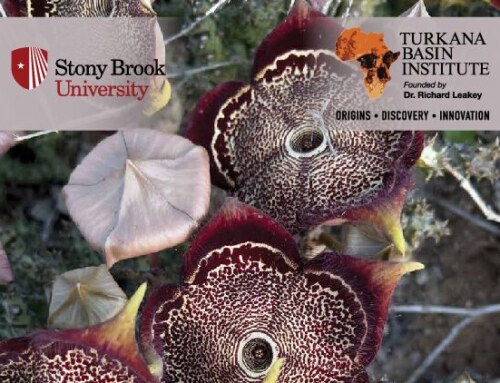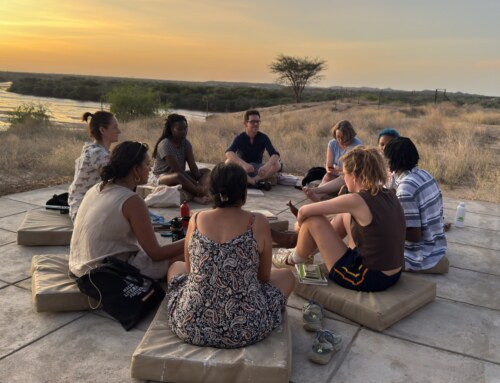Hello! It’s Ruth and Libby here to tell you all about our human evolution module, taught by Dr. Carrie Mongle and Dr. Louise Leakey.
We started our week out with some lectures about why we are here in the Turkana Basin to learn about human evolution. East Africa and Kenya specifically have been at the center of the field for decades and are home to some of the most famous hominid fossils in the world, such as the famous Homo erectus specimen known as the “Turkana boy” and many others. In summary, we are in a very special place for paleoanthropology and the absolute best for finding hominin fossils.
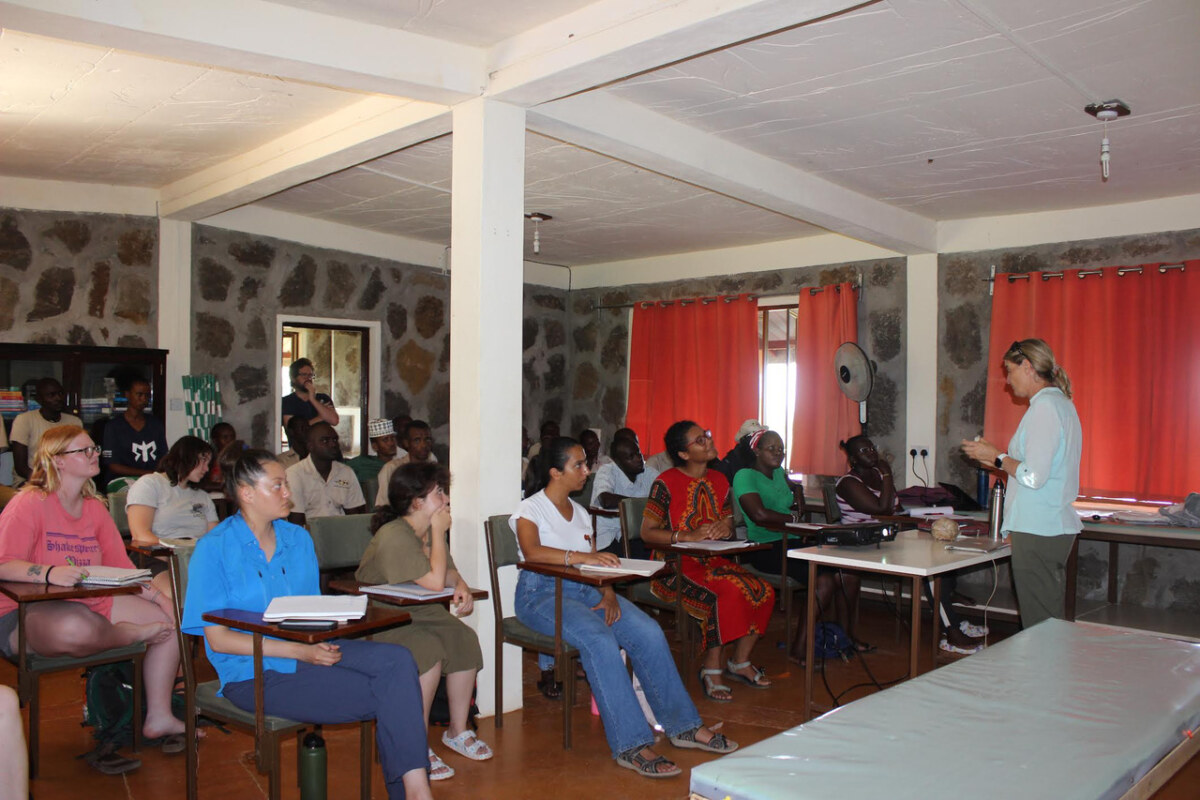
Dr Louise Leakey introducing the students to the importance of the Turkana Basin in human evolutionary studies.
On our first day in the field, we worked on trying to relocate some fossil localities that were first discovered over 50 years ago. Back then, fossil hunters did not have access to technologies like GPS, so they could not record important locations with the precision that we do today. So, it was up to us to try to track down the possible position of two different fossil findspots using only photos from the 1970s…this was no easy task! The landscape looks very different than it did when the photos were taken. After lots of discussion between the team, we think we got pretty close to the original site locations.
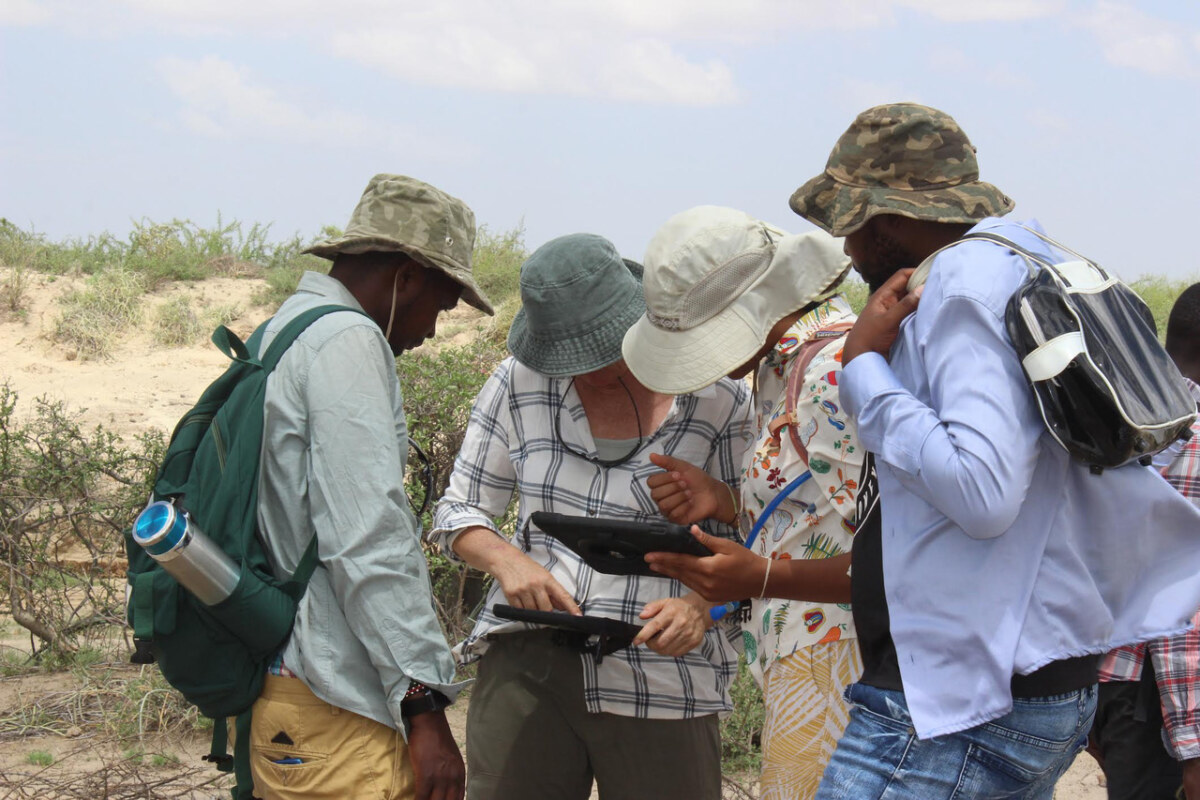
Comparing images, then and now, in the field to try to determine the precise locations of the fossil sites
The next day, we headed back into the field to the site we had identified the day before as one of the fossil localities. Guided by Dr Leakey and several experts from her Koobi Fora Research Project (KFRP) team, the students began excavating around the site where hominin fossils had previously been found in the hopes of finding additional pieces. We also dug a geological trench to help work out the stratigraphy of the site and the depositional environment. Immediately downslope, we found lots of fragments from a bovid and a carnivore, and we carefully sieved a lot of the surrounding sediment to make sure we didn’t miss any small pieces. We finished off the rest of the week in the field to get as much done on the excavation as we could. Although we didn’t find the missing hominin piece we looking for the in time we were excavating, it is possible that the next rains will expose something remarkable for Dr Leakey and her team to recover and study.
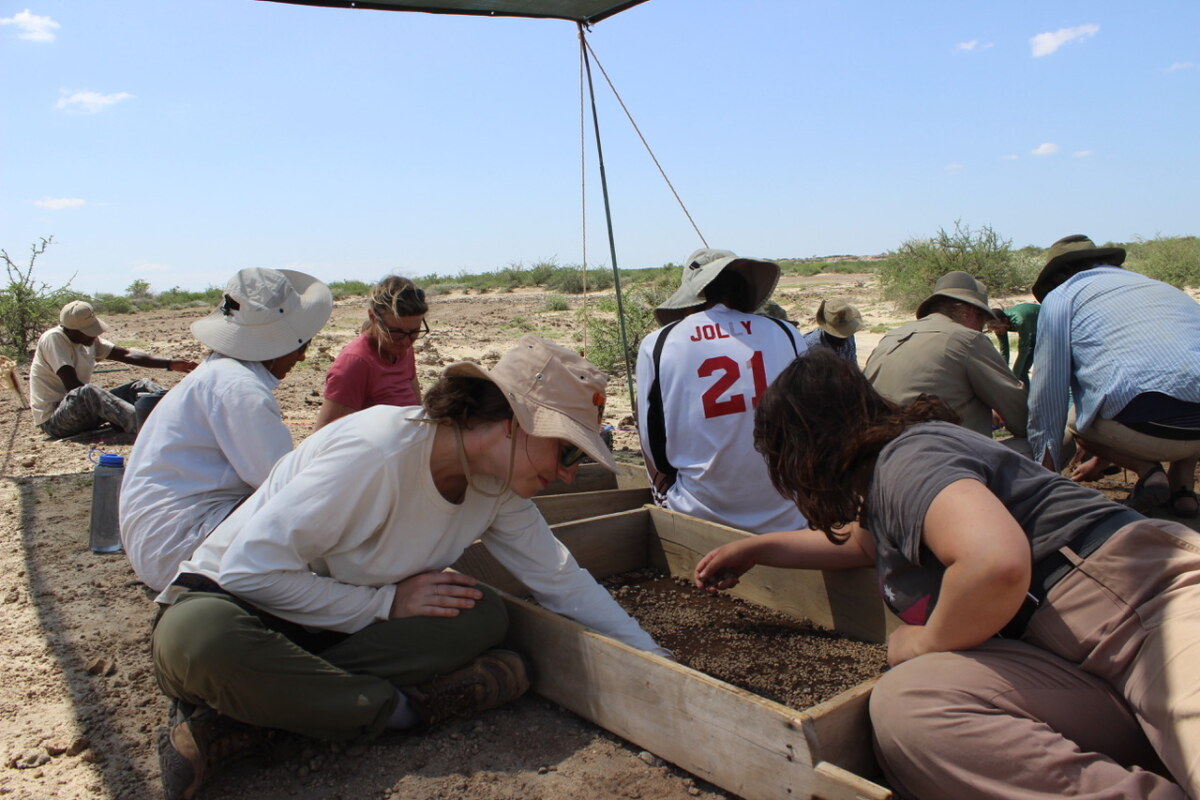
Drs. Carrie Mongle (foreground, left) and Louise Leakey (red shirt, background) show the students how to find small fossil fragments from sieved sediments.
In our second week we headed back into the field to do some prospecting across the wider area and searched for any new fossils we could identify. One of the team leaders knew of a hippo cranium and mandible which we got to help finish excavating. We all got some experience figuring out how to plaster jacket such a large fossil and transport it back to the lab. We spent some more time in the classroom the second week and talked in depth about early hominins and new relevant discoveries in the basin and throughout Africa.
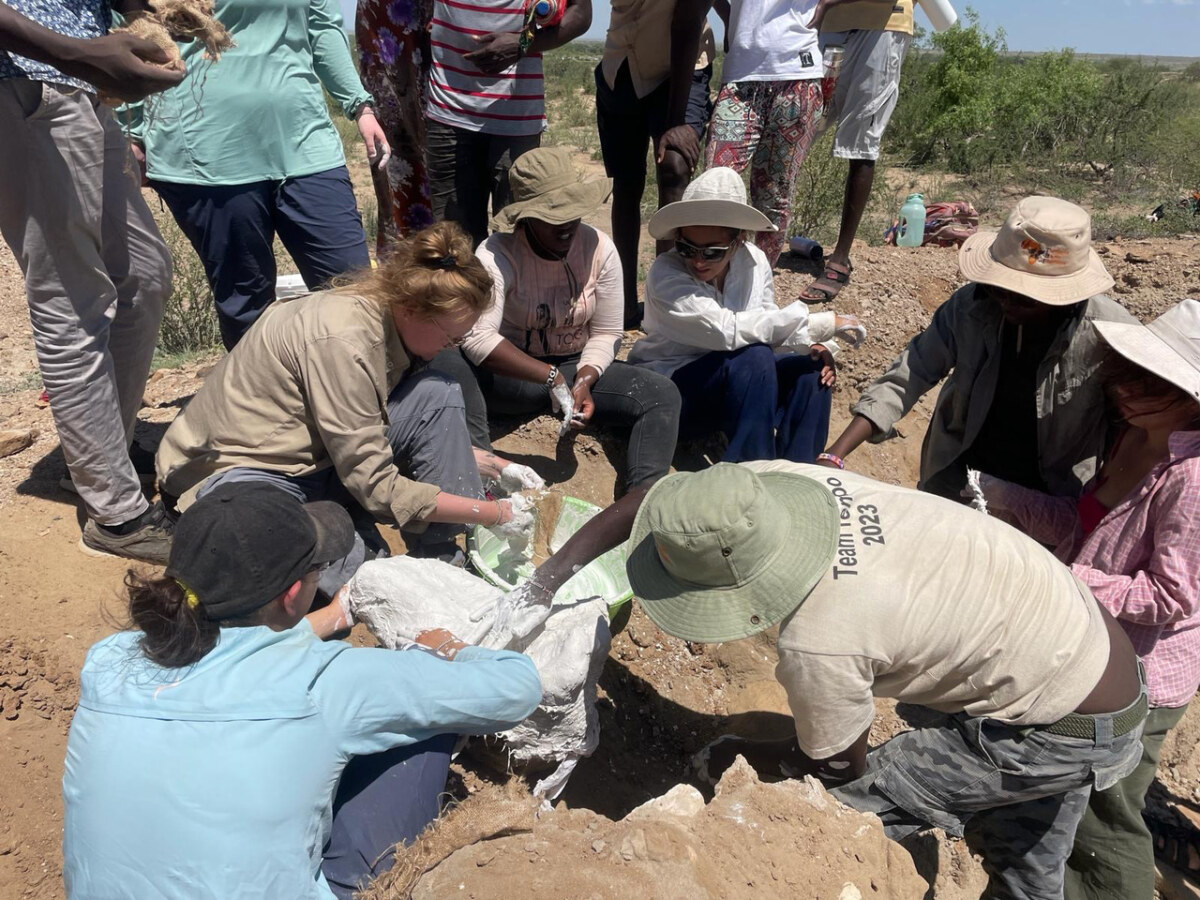
The whole team working together to add plaster to a hippo fossil before its extraction later in the day for cleaning back at the TBI Ileret Campus labs.
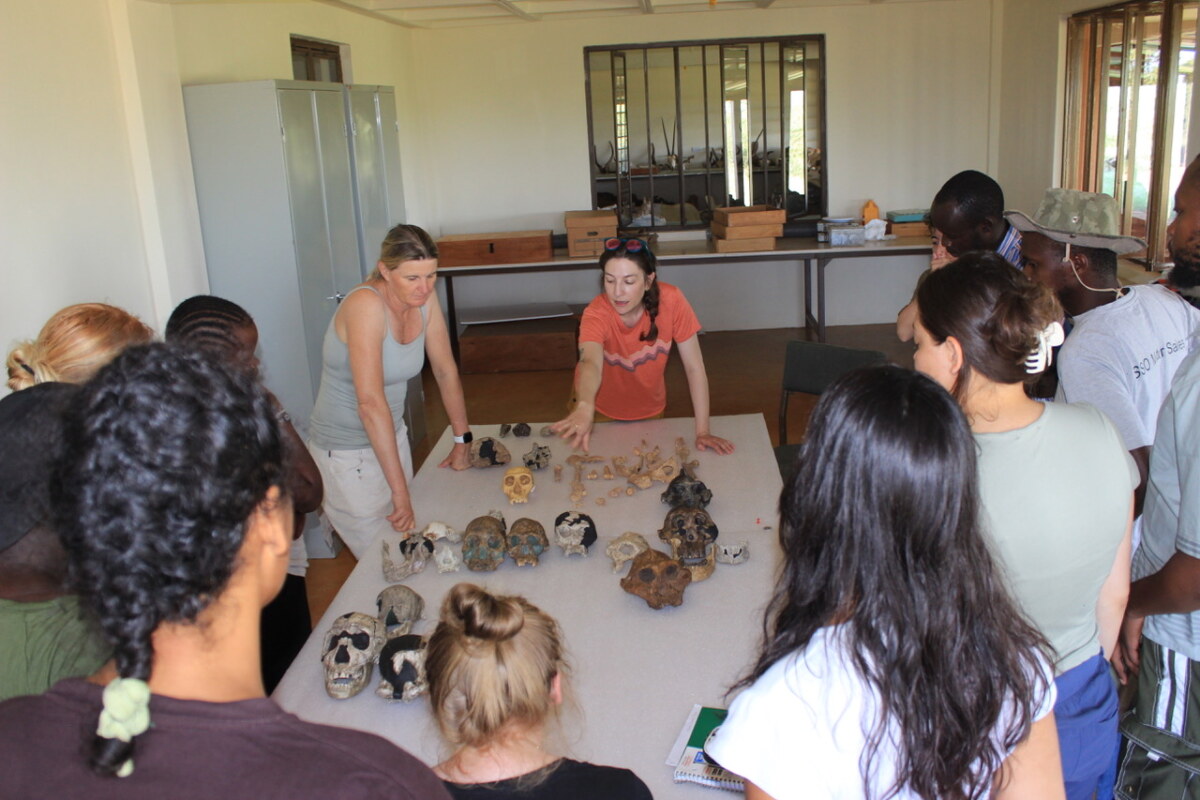
Drs. Louise Leakey and Carrie Mongle using casts to instruct the students in identifying and analysing key features of the some of the most important hominin fossil species.
We finished our module with a bittersweet goodbye to the Ileret Campus as we headed back to Turkwel Campus for our final module. The fieldschool volleyball team had some great fun and success at Ileret — we won against the TBI volleyball team before we left!
We all love and appreciate our TBI Ileret Campus family for welcoming us into their home and especially for feeding us lots of delicious chapati!

